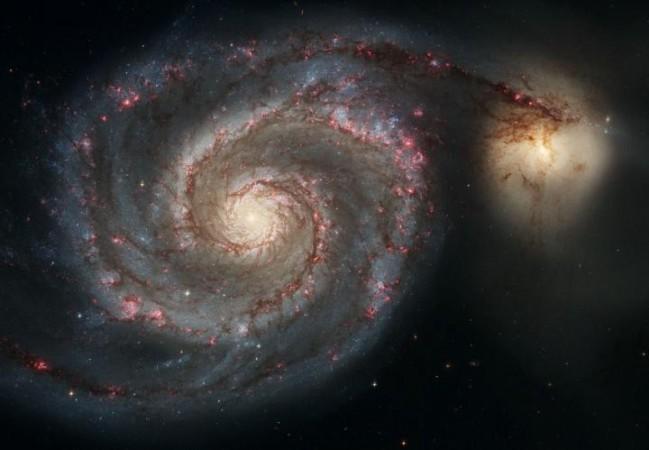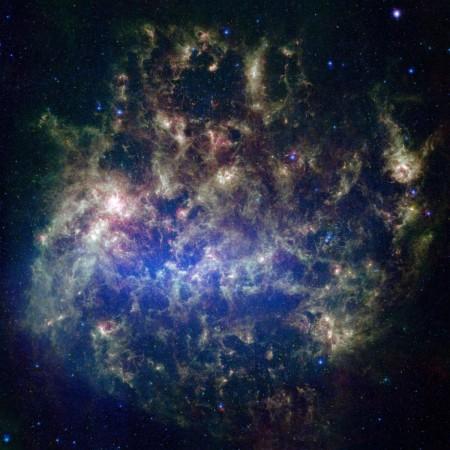
Referring to a previous study that predicted collision between our galaxy Milky Way and neighbouring galaxy, Andromeda in eight billion years, a new research by astrophysicists at Durham University in UK said the Large Magellanic Cloud (LMC) could hit the Milky Way in two billion years' time.
This catastrophic collision could wake up our galaxy's dormant black hole, which would begin devouring surrounding gas and increase in size by ten times and throw out high-energy radiation.
Though these cosmic fireworks are unlikely to affect life on Earth, the scientists said there is a small chance that the initial collision could send our Solar System hurtling into space.
Our galaxy Milky Way is surrounded by a group of smaller satellite galaxies that orbit around them, in a similar way bees move around a hive. The process continues for many billions of years but chances are high that they sink to the centre, collide and even devoured by their host galaxy, explain scientists.

The Large Magellanic Cloud is the brightest satellite galaxy that entered the Milky Way's neighbourhood about 1.5 billion years ago and is currently about 163,000 light years away.
Astronomers previously thought that it would either orbit the Milky Way for many more billions of years, or even escape our gravitational pull as well. The LMC has nearly twice as much dark matter than previously thought and this mass mass is rapidly leading to its energy loss that may eventually make it collide with our galaxy, said researchers.
Using the EAGLE galaxy formation supercomputer simulation, lead author Marius Cautun, a postdoctoral fellow at Durham, Durham University's Institute for Computational Cosmology working with the University of Helsinki in Finland, said: "While two billion years is an extremely long time compared to a human lifetime, it is a very short time on cosmic timescales."
The destruction of the Large Magellanic Cloud will wreak havoc with the Milky Way, waking up the black hole that lives at its centre and turning the entire galaxy into an 'active galactic nucleus' or quasar, explained the team. While the entire phenomenon may not affect our Solar System, "there is a small chance that we might not escape unscathed from the collision between the two galaxies which could knock us out of the Milky Way and into interstellar space," they cautioned.
Alis Deason, another researcher at Durham said: "We think that up to now our galaxy has had only a few mergers with very low mass galaxies... This represents very slim pickings when compared to nearby galaxies of the same size as the Milky Way. For example, our nearest neighbour, the Andromeda galaxy, devoured galaxies weighing nearly 30 times more than those consumed by the Milky Way. Therefore, the collision with the Large Magellanic Cloud is long overdue and it is needed to make our galaxy typical."
The findings are published in the journal Monthly Notices of the Royal Astronomical Society.
Andromeda is about 2.4 million lights years away from Earth, or 14 billion billion miles (billion billion twice is correct). It's almost a million times more distant than the nearest star to our sun, Alpha Centauri. The galaxy contains hundreds of billions of stars, and has a diameter of about 160,000 light years, or about 940 million billion miles.
The Andromeda Project involving about 20 institutions called PHAT or Panchromatic Hubble Andromeda Treasury survey is a key pointer for all these studies.












